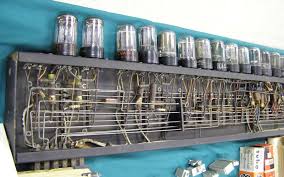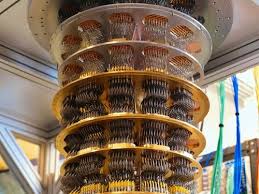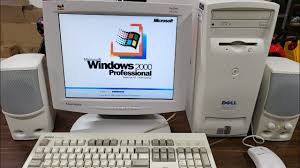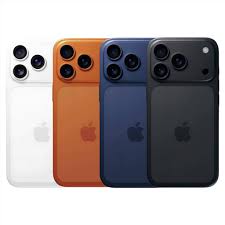1. Introduction:
The evolution of computers is a story that transforms how humans calculate, communicate, create, and govern — a tale central to the history of computing that moves from bulky vacuum tubes to quantum processors. Tracing the development of computers reveals leaps in materials, architecture, and theory, and points straight toward the future of quantum computers and the next paradigm shift in information technology.
2. Early origins — counting tools to mechanical engines:
Human computation predates electronics by millennia. From the abacus and tally sticks to mechanical devices, people have always sought ways to reduce mental labor.
- Mechanical calculators: In the 17th century Blaise Pascal and Gottfried Wilhelm Leibniz built early mechanical adding and calculating machines. These devices used gears and levers to perform arithmetic reliably.
- Analytical engine idea: Charles Babbage proposed the Analytical Engine in the 19th century — a conceptual programmable mechanical computer with separate memory and a central processing concept. Ada Lovelace’s notes on the Analytical Engine laid groundwork for algorithms and programming as abstract ideas.
These mechanical foundations established two lasting ideas: machines can automate calculation, and instructions (programs) are crucial.
3. The electrical age — vacuum tubes and the first electronic computers:
1) Vacuum tubes: the first active electronic components:

Vacuum tubes (thermionic valves) allowed electricity to be amplified and switched—enabling the first true electronic computers. Tubes could act as switches and amplifiers but were large, power-hungry, and fragile.
2) Pioneering machines:
- ENIAC (Electronic Numerical Integrator and Computer): One of the earliest general-purpose electronic digital computers, built in the 1940s. It used thousands of vacuum tubes to perform ballistic trajectory calculations and was programmable by rewiring.
- UNIVAC and early commercial machines: After ENIAC, machines like UNIVAC brought electronic computing to business and government, though they remained costly and complex.
Vacuum-tube computers proved that electronic switching provided enormous speed advantages over mechanical systems — but their limitations set the stage for a revolution.
4. The transistor revolution and integrated circuits:
1) Transistors: small, robust, efficient:
The transistor (first demonstrated in 1947) replaced vacuum tubes with a solid-state device that switched and amplified currents without the heat and fragility of tubes. Transistors reduced size, power and cost and vastly improved reliability.
2) Integrated circuits (ICs) and system miniaturization:
By placing many transistors on a single semiconductor chip, integrated circuits accelerated performance while shrinking footprints. ICs enabled complex logic circuits, memory chips, and eventually the microprocessor.
- Impact: ICs allowed entire computers to be built with components that fit on circuit boards, enabling smaller systems, greater complexity, and lower costs.
5. The microprocessor and the birth of personal computing:
Microprocessors: CPU-on-a-chip:
The microprocessor combined ALU, control logic, and registers onto a single chip — the heart of modern computing. Early microprocessors in the 1970s made personal computing feasible.
Key milestones:
- Intel 4004 / 8008 / 8080 / 8086 lineage: Early commercial microprocessors that powered calculators, terminals, and eventually personal computers.
- Altair 8800 & hobbyist revolution: The Altair and similar kits fired the imaginations of hobbyists and future entrepreneurs.
- IBM PC and Macintosh: The IBM PC (early 1980s) standardized PC architecture; Apple’s Macintosh introduced mainstream graphical user interfaces, expanding computing beyond specialists.
Personal computers democratized computing power, opening software ecosystems and industries.
6. Networks, the Internet and the distributed era:
From ARPANET to the Internet:
The idea of connecting computers to share resources matured into ARPANET and later the Internet. Packet-switched networks and TCP/IP enabled robust, scalable global communication.
World Wide Web and mass connectivity:
The Web (hypertext over the Internet) turned the network into an everyday utility. Browsers, search engines, and web standards created a global platform for information, commerce, and collaboration.
Mobile and wireless revolution:
Cellular and Wi-Fi technologies extended computing to pockets, making connectivity continuous and pervasive. Smartphones combined networking, rich sensors, and powerful processors—changing how people interact with computers.
7. Performance trends — Moore’s Law, scaling limits and new architectures:
Moore’s Law explained:
Gordon Moore observed that transistor counts on chips roughly double every two years. This trend led to exponential improvements in computing performance and cost-efficiency over decades.
Limits to scaling:
Physical realities—atomic dimensions, heat dissipation, quantum tunnelling—make indefinite scaling impossible. Dennard scaling slowed, and manufacturing costs for advanced nodes rose dramatically.
Architectural responses:
- Multi-core processors: Rather than increasing clock rates, chips gained multiple cores to improve throughput.
- Heterogeneous systems: CPUs combined with GPUs, FPGAs, and specialized accelerators to handle diverse workloads.
- Energy efficiency focus: Architectural and software co-design aim to deliver better performance per watt.
8. GPUs, AI accelerators, neuromorphic and heterogeneous computing:
GPUs transform computation:
Originally designed for graphics, GPUs excel at parallel operations. Their architecture became foundational for machine learning and high-performance computing.
AI accelerators and domain-specific chips:
ASICs and TPUs (Tensor Processing Units) illustrate how hardware tailored to specific algorithms can dramatically outperform general-purpose chips.
Neuromorphic and unconventional computing:
Researchers explore brain-inspired neuromorphic chips, photonic processors, and other paradigms that offer efficient, specialized computing for tasks like pattern recognition.
9. Enter quantum — principles, qubits and hardware approaches:
Quantum computing basics:

Quantum computers use qubits, which can exist in superposition and be entangled. This enables fundamentally different algorithms for certain problems, offering potential exponential speedups in areas like factoring, simulation, and optimization.
Key quantum concepts:
- Superposition: Qubits represent combinations of 0 and 1 simultaneously.
- Entanglement: Qubits can be correlated in ways impossible classically.
- Quantum gates & circuits: Operations that manipulate qubit states.
- Physical qubit technologies:
Several promising physical implementations exist:
- Superconducting qubits: Circuits cooled to near absolute zero; major vendors use this (e.g., IBM, Google).
- Trapped ions: Ions manipulated by lasers with long coherence times (e.g., IonQ).
- Topological qubits (research stage): Aim for intrinsic error resistance.
- Photonic qubits: Use light for communications and certain computations.
Each approach balances coherence, gate speed, scalability, and hardware complexity.
10. From research to power — quantum applications and limitations:
Quantum advantage vs quantum supremacy:
- Quantum supremacy is showing a quantum device performing a task infeasible for classical supercomputers (demonstrated experimentally for contrived problems).
- Quantum advantage is the practical, useful superiority for real-world tasks.
- Where quantum may excel:
- Quantum chemistry and materials simulation: Modeling molecules and reactions with quantum accuracy.
- Optimization problems: Logistics, finance, and machine learning could benefit from quantum algorithms.
- Cryptography: Quantum computers threaten current cryptosystems (e.g., RSA), motivating post-quantum cryptography.
- Current limitations:
- Error rates & noise: Qubits are fragile; quantum error correction demands large overhead.
- Scalability: Building thousands to millions of reliable qubits is an immense engineering challenge.
- Practicality & software tooling: Quantum algorithms are specialized; hybrid quantum-classical approaches are likely initially.
11. Societal, ethical and economic impacts of the computing evolution:
Economic transformation:
Computing advances created entire industries (software, cloud, semiconductors). Each leap—microprocessors, Internet, AI, and potentially quantum—reshapes labor markets, productivity, and geopolitics.
Ethical concerns:
- Privacy & surveillance: Ubiquitous computing raises privacy risks.
- Bias in algorithms: Machine learning systems can amplify inequities if trained on biased data.
- Security & cryptography: Quantum threats to encryption and the need for post-quantum standards.
Environmental impact:
Computing consumes significant energy: data centers, training large AI models, and crypto mining. Energy-efficient architectures and renewable-powered infrastructure become critical.
12. Looking forward — what comes after quantum?
While quantum computing is a major frontier, other directions will shape future computing:
- Hybrid systems: Tight integration of classical, quantum, and analog co-processors.
- Photonic computing: Light-based logic and interconnects for speed and low-loss communication.
- Molecular and DNA computing: Extremely dense storage and new computation models for specialized tasks.
- Edge intelligence: Distributed on-device AI for privacy-preserving, low-latency applications.
- Programmability and software abstractions: Higher-level languages and toolchains will hide hardware complexity.
Forward progress will depend on cross-disciplinary advances in materials science, algorithm design, hardware engineering, and systems software.
13. Timeline — key milestones in the evolution of computers:
- Ancient – 17th century: Abacus, mechanical calculators.
- 1800s: Babbage’s Analytical Engine; Ada Lovelace outlines algorithmic thinking.
- 1930s–1940s: Electromechanical and vacuum-tube computers (e.g., ENIAC).
- 1947–1960s: Transistor invention; early ICs.
- 1970s: Microprocessor era begins.
- 1980s–1990s: Personal computers, GUIs, networks, Internet expansion.
- 2000s: Mobile computing, cloud services.
- 2010s–2020s: AI acceleration with GPUs and TPUs; early quantum experiments.
- 2020s–2030s: Quantum progress, specialized accelerators, edge AI proliferation.
14. Conclusion — a continuum of innovation:
From gears and punched cards to transistors, microprocessors, and qubits, the evolution of computers demonstrates a continuous pursuit: do more with less — more speed, more capacity, more intelligence, using fewer resources. Each era built on the previous, and the path from vacuum tubes to quantum machines is not a straight line but an expanding web of architectures and possibilities. Understanding this history clarifies how to steward future innovations responsibly and equitably.
15. External Links:
- Computer History Museum — Timeline & Exhibits
- IEEE Spectrum — Computing Coverage
- IBM Research — Quantum Computing
- Nature — Quantum Information
- ACM Digital Library — Computing Research
- arXiv.org — Preprints on Quantum and Computer Architecture




Leave a Reply